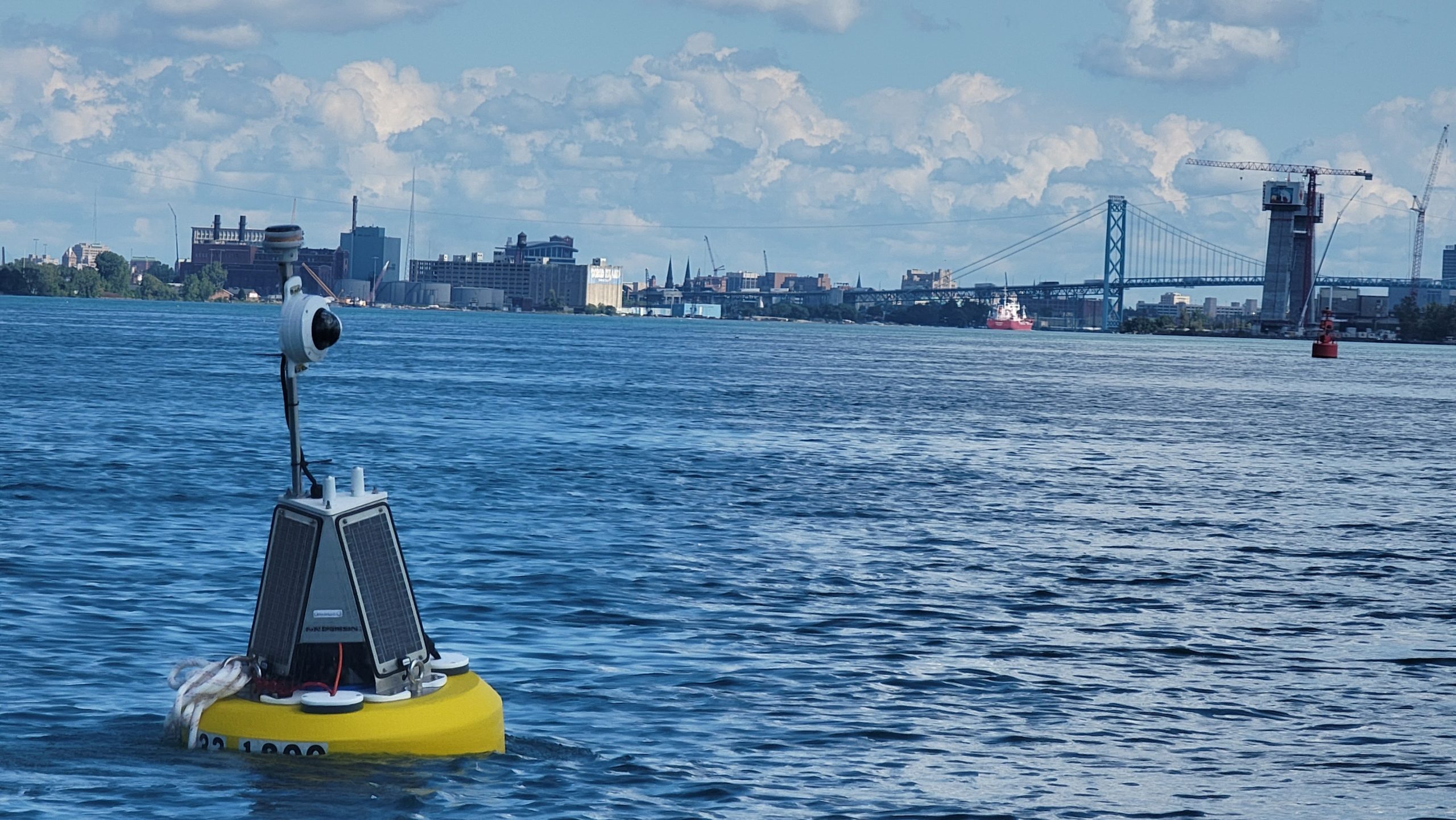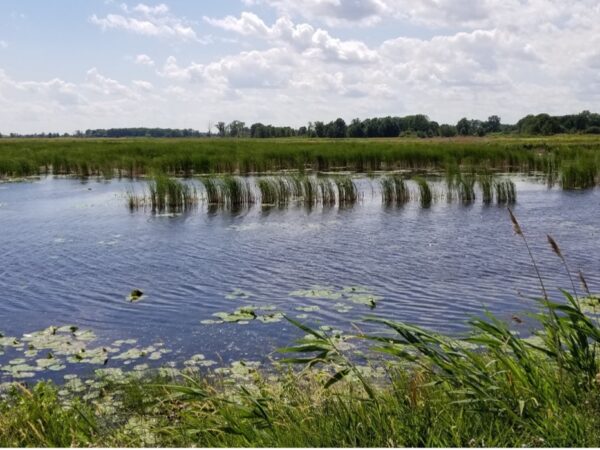
As the Great Lakes experience more harmful algal blooms due to climate change, real time monitoring of drinking water for toxins is becoming increasingly urgent.
Warm water temperatures, increased rainfall and fertilizer run-off from farm fields are providing fuel for blooms that can taint water.
This spring, a floating sensor for monitoring drinking water drawn from the Detroit River will begin giving real-time data on potentially toxic blue-green algae, along with other water quality data such as temperature, pH and dissolved oxygen.
While there is no current cause for concern over toxic blooms in the river, the Great Lakes Water Authority wants to establish a baseline, said the water authority’s John Norton, director of energy, research and innovation.
“Algal bloom wash through from Lake St. Clair, but they’re very mild. You don’t get a build up with a fast-flowing river,” he said. “The potential is small, but it’s a realistic risk and we’d like to make sure when it happens, we have the most appropriate response.”
The Great Lakes Water Authority – which provides drinking water to nearly 40% of Michigan’s population – is partnering with private water monitoring firm LimnoTech and the University of Windsor on the project. The group ran a successful two-month trial with the sensor last fall before pulling it out for the winter.
The sensor is attached to a large yellow buoy and is equipped with a camera that provides 20-second clips every 10 minutes. To be deployed 1.6 miles (2.6 km) ahead of the authority’s water intake, 3 miles (4.8 km) northeast of Belle Isle in Canadian waters, it will measure pigments produced by blue-green algae.
There are already roughly two dozen real-time sensors in lakes Erie and Huron that can monitor for blue-green algal blooms. They are the result of joint partnership between various government agencies, water treatment authorities, universities and private water monitoring firms. Most are on the U.S. side, but there are a handful in Canada near Leamington, Ontario.
The new sensor is the first to be placed at the head of the authority’s intake, providing between six to 10 hours’ notice of any water quality problems.
“We already have monitoring at the intake itself, as well as at the water plants. This gives us additional time to make informed decisions,” said biologist Andrea Busch, the authority’s management professional of energy, research and innovation.
The sensor is not equipped to determine whether a bloom is producing toxins, but it gives enough of a heads up for testing at the water plant. If that testing comes back positive, plant workers can then use activated carbon filters to absorb and remove the toxins.
“That can be expensive,” said Mike McKay, an environmental microbiologist at the University of Windsor who is working on the project. “So one of the benefits of the sensor is that it provides an early alert and gets you into a decision-making tree: ‘Do I need to incur additional expense by doing this test and the treatment?’”
There is no established threshold for when water treatment authorities should be concerned about a bloom. Norton said he hopes the university researchers taking part in the project can help create one.
In the meantime, the authority is planning to deploy a second sensing buoy this year, just ahead of its intake near Port Huron on Lake Huron.
Catch more news at Great Lakes Now:
The next source of trouble for Great Lakes fish populations: tires
Filter Fix: Study shows washing machine filters keep harmful microfibers out of the Great Lakes
Featured image: A sensor for monitoring drinking water drawn from the Detroit River, attached to a yellow buoy, will begin giving real-time data on potentially toxic blue-green algae, along with other water quality data such as temperature, pH and dissolved oxygen. (Photo Credit: Great Lakes Water Authority)




